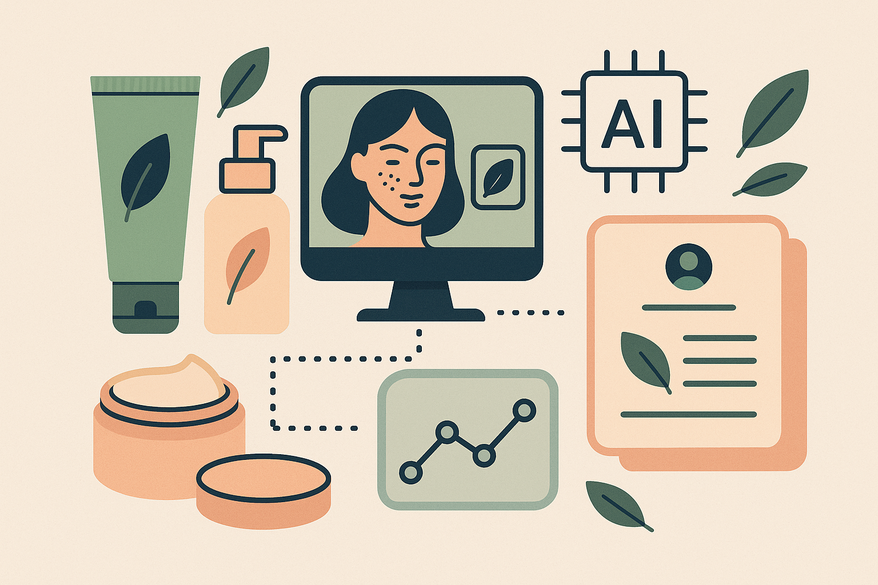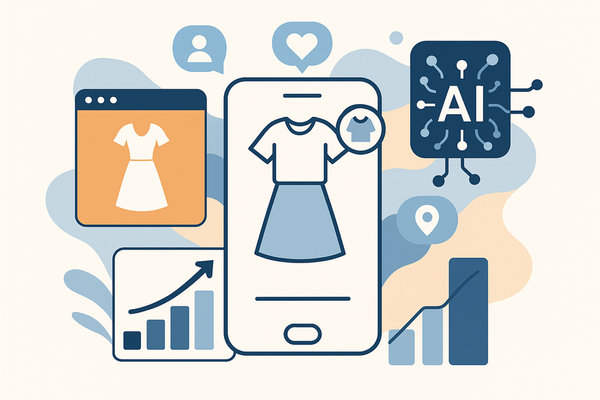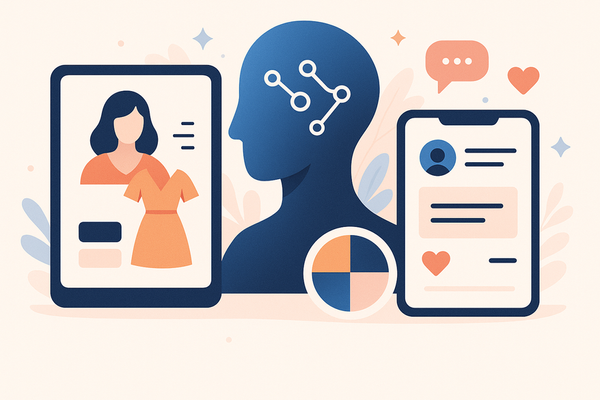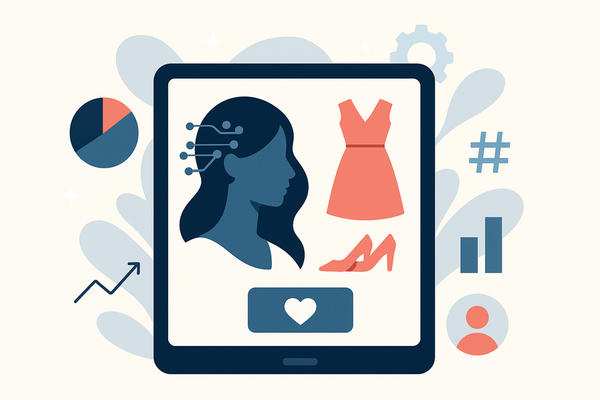Clean Beauty Routine AI: Revolutionizing Non-Toxic Skincare
Discover how clean beauty routine AI uses data science to optimize non-toxic skincare, offering personalized regimens for safer, healthier skin.

Estimated reading time: 7 minutes
Key Takeaways
- Clean beauty prioritizes non-toxic, transparent, and sustainable formulations.
- AI personalization uses machine learning and computer vision to tailor routines.
- Ingredient-scanning platforms instantly flag harmful chemicals and rate safety.
- Machine learning powers automated audits, alternative suggestions, and adaptive plans.
- Top AI-driven apps simplify shopping, boost transparency, and improve results.
Table of Contents
- Section 1: Understanding Clean Beauty
- Section 2: The Role of AI Personalization
- Section 3: How AI Supports a Clean Beauty Routine
- Section 4: Benefits of Using AI for Your Clean Beauty Routine
- Section 5: Practical Tips and Tools: AI-Driven Apps
- Conclusion
- FAQ
Section 1: Understanding Clean Beauty
Clean beauty is more than a trend—it’s a movement toward safer, eco-friendly personal care.
Core Principles
- Avoids irritants, allergens, endocrine disruptors, and carcinogens.
- Favors ethically sourced, sustainable, transparent formulations.
- Embraces “fewer but higher-quality” natural or botanical ingredients over synthetic compounds.
Consumer Demand
- Health and environmental awareness fuel the search for toxin-free products.
- Recent market data shows a 25% year-over-year increase in clean beauty product sales (Nielsen 2024).
- Social media and influencer endorsements amplify ingredient transparency trends.
Real-World Usage
- Shoppers read labels for parabens, phthalates, formaldehyde, and sulfates.
- Communities share product audits on forums to vet new launches.
Source:
Bellevie complete guide to clean beauty
Section 2: The Role of AI Personalization
AI personalization brings machine learning, computer vision, and data analytics to your bathroom countertop.
Defining AI Integration
- Assess skin health via selfies and image analysis (computer vision).
- Analyze ingredient safety through natural language processing (NLP).
- Recommend products based on user profiles, lifestyle habits, and environmental factors.
Real-World Examples
- AI Skin Analysis Apps
- Capture a selfie, then map hydration levels, wrinkle depth, and oiliness zones.
- Offer regimen tweaks like adding a hydrating serum or sunscreen. - Ingredient-Scanning Platforms
- Flag parabens, phthalates, formaldehyde, and other harmful chemicals.
- Rate each product’s safety score out of 100 instantly. - AI-Driven Formulation Tools
- Match user profiles (sensitive, acne-prone, mature skin) to clean beauty lines.
- Use machine learning to optimize ingredient blends for efficacy and safety.
How It Works
- Data Collection: Users enter age, skin type, concerns, and lifestyle data.
- Algorithmic Matching: AI models cross-reference this data with ingredient databases.
- Recommendation Engine: Tailored routines and product suggestions delivered via app or email.
For an in-depth system that handles all these steps seamlessly, see our AI Skincare Recommendation System guide.
Section 3: How AI Supports a Clean Beauty Routine
AI and machine learning power ingredient audits, routine planning, and formulation checks.
Consumer Process Step-by-Step
- Input Products
- Scan barcodes or manually enter current skincare items. - Ingredient Comparison
- AI compares each formula against a clean beauty database.
- Uses machine learning to flag endocrine disruptors, allergens, and irritants. - Alternative Suggestions
- Recommends replacement products with safer, sustainable ingredients.
- Prioritizes cruelty-free and eco-certified formulas. - Routine Generation
- Generates a weekly or monthly plan that adapts to skin progress data.
- Sends reminders for morning and evening steps.
Many users complement this with a personalized tool—see our Personalized Skincare Analysis Tool to learn more.
Section 4: Benefits of Using AI for Your Clean Beauty Routine
AI transforms your skincare by boosting personalization, efficiency, and transparency.
- Personalization
• AI tailors routines to individual skin type, sensitivities, and lifestyle habits.
• Delivers recommendations based on age, climate, and even diet.
• Clinical study: AI-guided regimens improve skin hydration by 32% vs. one-size-fits-all plans. - Efficiency
• Filters out harmful ingredients in seconds instead of hours of manual research.
• Simplifies shopping lists by narrowing choices to clean-certified products.
• Reduces returns and repurchases through better first-buy accuracy. - Transparency
• Provides ingredient-origin maps, safety ratings, and sustainability scores.
• Builds consumer trust through data-backed insights and audit trails.
• LSI terms: ingredient traceability, supply chain transparency, eco-certification.
Real-World Impact
- A tester found it took just 5 minutes per product to get a full safety report.
- A brand saw a 40% uplift in repeat purchases after adding an AI-driven ingredient score to its site.
Section 5: Practical Tips and Tools: AI-Driven Apps
Start building your optimized clean beauty ritual with these top AI tools.
- ThinkDirty
• Core feature: Database of 1M+ products, scores based on toxicity.
• Integration: Scan new purchases, note high-risk flags, swap for safer alternatives. - Yuka
• Core feature: Barcode scanning with health impact scores and additive breakdown.
• Integration: Track daily exposure, share reports with dermatologists. - Tildy
• Core feature: AI quiz that captures skin history and lifestyle, then generates routines.
• Integration: Use reminders to stick to morning/evening steps, log results. - Proven Skincare
• Core feature: Personalized serum formulations via in-depth skin quiz and algorithm.
• Integration: Adjust serum blend monthly as skin concerns evolve. - Clean Beauty AI (Hypothetical/New)
• Core feature: Sustainability metric scanner, tracing each ingredient to farm or lab.
• Integration: View carbon footprint scores and ethical sourcing badges before buying.
To automate and optimize your routine from start to finish, check out our Customized Skincare Routine App guide.
To streamline ingredient analysis, Maxx Report offers AI-powered insights that rate your looks and your routine with precision. For a quick start, watch this overview:
Conclusion
A clean beauty routine ai blends the best of nature and data science. By avoiding harmful ingredients and harnessing AI personalization, you can build a safer, more effective skincare regimen in minutes.
Ready to transform your ritual? Download an AI tool today, scan your collection, and let data-driven insights guide your next clean beauty purchase. Share your clean beauty routine ai success stories in the comments below!
FAQ
What exactly is a clean beauty routine?
Clean beauty involves using products free from toxins, harsh chemicals, and questionable additives. It emphasizes sustainability, ethical sourcing, and ingredient transparency to support both your skin and the planet.
How does AI analyze my skin?
AI combines computer vision with machine learning. A simple selfie can be mapped for hydration, texture, and wrinkle depth. Algorithms then cross-reference your skin data with ingredient safety profiles to generate personalized regimens.
Is my data safe with AI skincare apps?
Reputable platforms use end-to-end encryption and anonymize your inputs. Always review a tool’s privacy policy and look for certifications like GDPR compliance to ensure your personal data remains protected.
Which AI-driven app should I start with?
If you’re new, ThinkDirty and Yuka offer user-friendly barcode scanning and safety scores. For deeper personalization, consider Tildy or Proven Skincare to tailor a complete regimen based on a detailed quiz.





